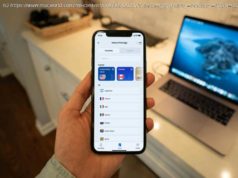The new Google Pixel 3 and Pixel 3 XL phones look like they have really excellent cameras. We got to take an early look at them.
Google’s new Pixel 3 and Pixel 3 XL look like the best possible cameras with good flagship smartphones attached. I got some time with them at Google’s launch event.
Listen, 2018 is not the most exciting year for smartphones. Being polite, it’s a refinement year. 5G is coming, a little bit in 2019 and a lot in 2020, and things are going to get crazy then. For now, enjoy a phone with a very nice camera that will hopefully call the electrician for you.
The two Pixels supposedly have bigger screens than their predecessors, at 5.5 and 6.3 inches as compared with 5.0 and 6.0 inches, but they’re playing the aspect-ratio game, so the phones themselves aren’t actually bigger. The screens are taller and narrower, with smaller bezels. (This is good, because the Pixel 2 ’s bezels were huge.) They also look noticeably brighter than the Pixel 2 screens, are gorgeously well saturated, and more importantly equal, where the Pixel 2 and Pixel 2 XL had wildly different displays.
The Pixel 3, with its 18:9 5.5-inch display feels just like the Pixel 2 in the hand, and it should: it’s 68.2mm wide as compared with the Pixel 2’s 70.4mm. You’re getting slightly more display: 11.7 square inches as opposed to 10.68 square inches on the Pixel 2. But you aren’t getting as much more display as you may think.
Here’s the thing, though—I wish the smaller phone had a notch. Many people deride notches, but they do give you more screen space, and if they’re used smartly for the Android status bar they can be useful.
The phone’s back uses a proprietary process to put a matte finish on a glass back, and it’s fabulous. It has that signature Pixel half-and-half-ness, matte on the bottom and glossy on the top, with the fingerprint sensor in an LG- esque position partway down the back. Yet the whole thing is glass now, apparently, allowing for wireless charging in the $79 Pixel Stand charger accessory.
The cameras, of course, are epic. The phones have a single 12-megapixel main camera and dual 8-megapixel standard and wide-angle front-facing cameras. The front-facing cameras do a very neat trick: At their widest angle, there is massive fish-eye distortion, but once you take your photo, post-processing makes that distortion go away. Neat! They also have the best software bokeh mode I’ve seen, definitely better than the iPhone XR ’s.
The main camera has a bunch of advances, most of which I couldn’t test. Advanced HDR and low-light capabilities, for instance, just weren’t manageable in the demo room. I did get to check out Google’s gimmicky AR stickers, though, which insert cartoon characters or Marvel superheroes into your photos. The characters actually respond to things going on around them. For instance, I summoned Iron Man, and smiling at him made him point at me, but frowning made him tilt his head in concern. This is very flashy use of AI, but I really struggle to see anyone using it in the real world.
The software is Android 9.0 Pie, which we’re seeing on a bunch of other phones now, but some features are coming to these phones first. The most telling, and coolest, are Google Duplex and call screening. Duplex, which we first saw demoed in May at Google I/O, pretends to be an actual human assistant to book you restaurant reservations and hair salon appointments. Those „domains“ will expand with time; I’m hoping it will finally figure out how to get an electrician in to fix my bathroom. (If you know one in Queens who actually answers the phone, put it in the comments, okay?)
Call screening lets you have Google’s cloud system pick up the phone for you and display what a caller is saying in text, so you can check to see if it’s a robocaller or telemarketer before you pick it up. That’s really cool.
Checking with CPU-Z revealed the Pixel 3s to have 2.8GHz Qualcomm Snapdragon 845 processors, like every other flagship smartphone. They felt fast on the demo stand, but these devices always do. They have 4GB of RAM and no microSD storage card slot. Pixels (and Nexuses) never have.
The modem specs in here are…still a mystery. Google’s official spec sheet says one thing, an email I got from Verizon says a second thing, and a tweet from wireless expert Andrew Shepherd says yet a third thing. The phone appears to have gigabit LTE that works on at least Verizon, AT&T, and T-Mobile; it’s unclear if it works with Sprint. Since it’s being sold by Google Fi, which uses the Sprint network, I’d think it would work with Sprint, but I’d like to see official confirmation.
The Pixel 3 costs $799 for a 64GB model or $899 for 128GB, while the Pixel 3 XL costs $899 for 64GB or $999 for 128GB. That checks out against the prices of other leading phones like the iPhone XS Max, the LG V40, and the Samsung Galaxy Note 9. The phones are available for pre-order now and will be available in stores Oct. 18. Check back soon for full reviews.






